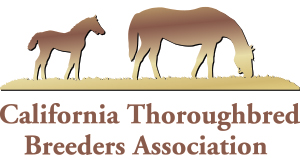By Bloodhorse.com
ARCADIA, Calif. (May 26, 2017) –In the aftermath of California-bred Masochistic‘s disqualification from the 2016 TwinSpires Breeders’ Cup Sprint (G1), Del Mar and the Breeders’ Cup asked the California Horse Racing Board May 25 for permission to avoid such an event in the 2017 World Championships.
The proposal submitted to the CHRB Thursday at Santa Anita Park asked for the approval of medication-based conditions, specifically conditions that would “prohibit any horse from participating in the (Breeders’ Cup) that tests positive for anabolic steroids and/or any other prohibited substances … within six months of the running of the (Breeders’ Cup) races.”
The board approved the request, which was set up by a Feb. 23 CHRB ruling that allows for medication-based eligibility conditions in the state, with the regulatory agency’s approval. The Breeders’ Cup policy follows the model rule approved by the Association of Racing Commissioners last year that calls for any horse who receives an anabolic steroid treatment sit out of racing for at least six months after that administration.
BALAN: CHRB Approves Medication-Based Conditions
In Masochistic’s case, trainer Ron Ellis said he gave the Sought After gelding a stanozolol treatment 68 days before the race. Ellis said a pre-race test showed low levels of the steroid, but he decided to run the horse because “it was decided Masochistic would ‘most likely’ come out with a clear test” after the Breeders’ Cup Sprint. After the Sprint, a trace amount of the steroid was still detected in Masochistic’s system, which led to the disqualification.
ANGST: BC Sprint Runner-Up Masochistic to be DQ’d
A pre-race positive test, under this year’s conditions, would disqualify Masochistic from entering a Breeders’ Cup race.
“The (Masochistic) incident brought to light that California does have in place a steroid rule that allows the administration of a steroid … and subsequently, the only violation takes place if and when a horse tests positive (after) a race,” said Craig Fravel, president and chief executive officer of the Breeders’ Cup. “I’ll be frank. I was personally surprised, because most of us, I think, five or six years ago, believed that we had virtually eliminated steroid administration from racing or training in general.”
The previous model rule on anabolic steroid administration called for horses to sit out at least 60 days and present a clear test before being allowed to race again. The California rule had only required that a horse sit out at least 60 days.
“The fact that the rules in many states were written a little different on that subject came to light and it became imperative that we addressed that issue,” Fravel said.
Fravel said the measure is important for the Breeders’ Cup because the event seeks to attract horses from around the world, and the connections of those horses need to be reassured they are on a level playing field with U.S.-trained horses.
“We’ve modeled an out-of-competition testing program—that we already had in place in terms of testing, but we didn’t have the enforcement mechanisms within the rule. … I will add that the rules we drafted are essentially the same as the out-of-competition model rules that are pending … but we felt it was imperative to get this in place before the Championships,” Fravel said. “First of all, to give the horsemen notice that the rules will be in effect, and secondly, we were not highly confident that the model rule, as proposed by the (CHRB), would be in effect in time for the Championships.
“We’re trying to move the clock forward here—be proactive in this. It’s basically the same rules as the (Association of Racing Commissioners International and Racing Medication and Testing Consortium)-endorsed model rules.
“I should add that it’s particularly important for the Breeders’ Cup. We are a truly international championship. We have horses coming from all over the world—from South America, from France, from Great Britain, and Ireland. In order to attract those horses against American horses, they have to have the confidence they’re not racing against horses that have an advantage over them in terms of training. If you’re able to administer an anabolic agent or blood-doping agent in this country, in advance of a championship in a six-month period, the general consensus is there is an advantage to that training regimen.”
After Fravel’s comments, the CHRB members had no questions for the Breeders’ Cup representative or Del Mar executives in attendance and voted unanimously to approve the measure.


